Norco Sight
Wheel Size: 29’’ front / 29’’ or 27.5’’ rear
Travel: 150 mm rear / 160 mm front
Geometry Highlights:
- Sizes Offered: 1, 2, 3, 4, 5
- Headtube Angle: 64°
- Seat Tube Angle: 77.5° (size 3)
- Reach: 472.5 mm (size 3)
- Chainstay Length: 434 mm (29’’) or 428 mm (MX); Size 3
Frame Material: Aluminum and carbon fiber versions available
Price:
- Aluminum frame w/ RockShox Vivid Ultimate shock: $2,399 USD / $2,199 CAD
- Carbon frame w/ RockShox Vivid Ultimate shock: $3,999 USD / $5,149 CAD
- Complete bikes: $3,999 to $7,499 USD / $5,049 to $12,999 CAD
Blister’s Measured Weight (Sight C1 MX, Size S4): 35.34 lb / 16.03 kg
Test Locations: Washington
Reviewer: 6’, 170 lbs / 183 cm, 77.1 kg
Test Duration: 4 months
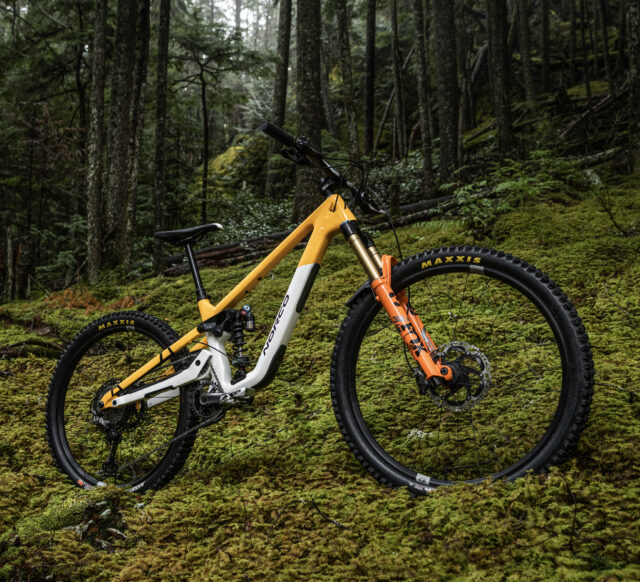
Intro
High-pivot bikes are becoming increasingly common, but the layout is still most often featured on longer-travel Enduro and DH rigs. So when Norco announced that the Optic and Sight (their Trail and All-Mountain options, respectively) were moving to a high-pivot layout, I was quite curious to see how the layout would apply to shorter-travel packages.
We’ve been spending a lot of time on both — and our Full Review of the Optic is coming very soon — but let’s start with the Sight, which was, at the time, the second shortest-travel high-pivot bike I’d ridden, behind only the Optic. So has Norco managed to make the layout feel coherent in a shorter-travel, more versatile package?
[For all the details on the design and spec of the Sight, check out our First Look, and Ep.211 of Bikes & Big Ideas with Norco engineer Colin Ryan.]
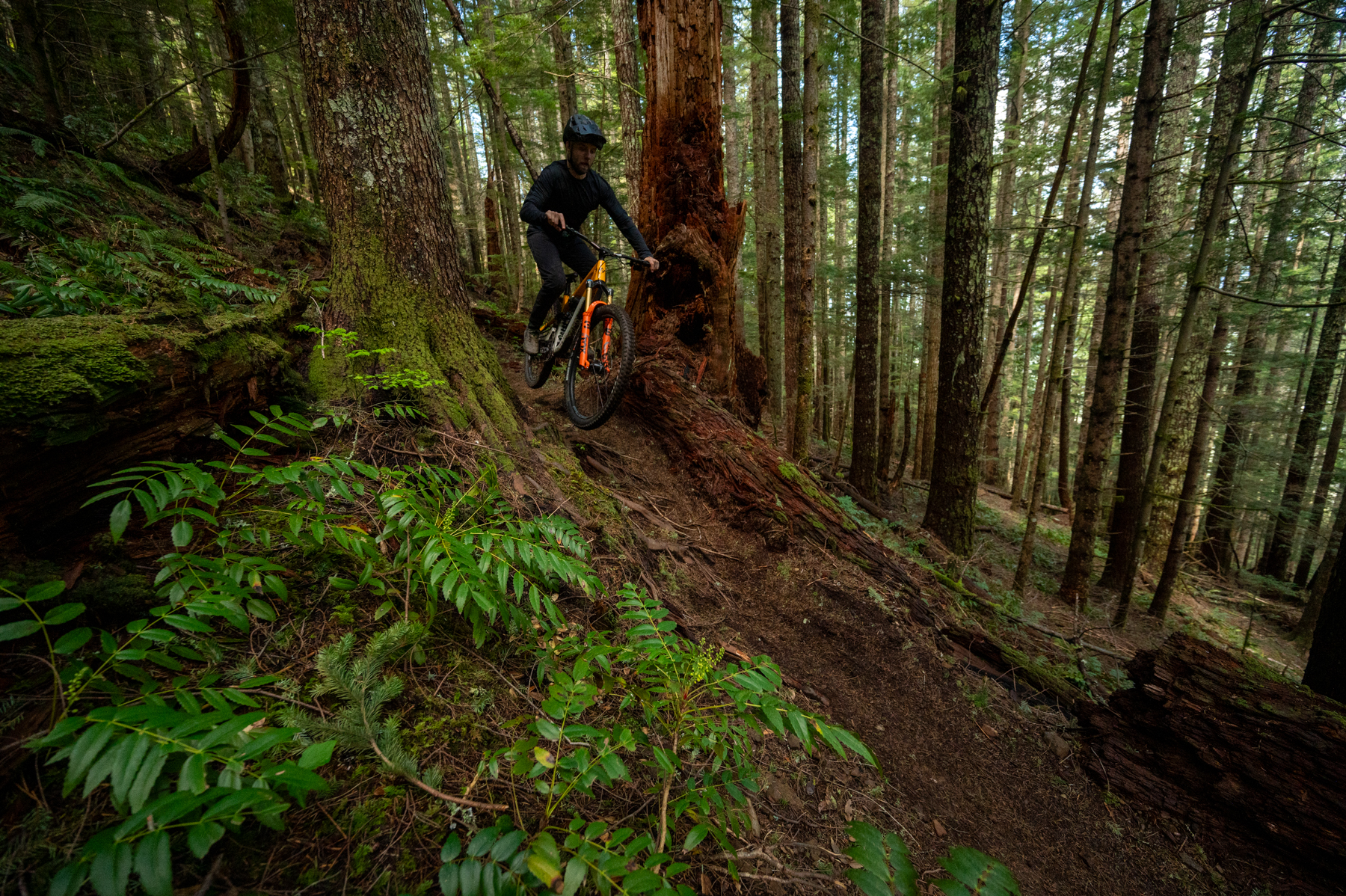
Fit & Sizing
David Golay (6’, 170 lb / 183 cm, 77.1 kg): Norco’s recommended sizing puts me squarely on a Size 4 Sight, outside of the overlapping regions for the S3 and S5. While I think that is the right size for me, the Sight’s sizing merits a little more examination than many other bikes we get on.
The S4 Sight looks big on paper — 497.5 mm reach, 645 mm stack, 637 mm effective top tube — and indeed fits bigger than the given frame size that most manufacturers recommend for me in most other bikes (usually a size Large). But it’s also pretty common for me to feel like my ideal sizing would be a notch bigger than a lot of brands’ Large frames, sometimes to the point of wanting to bump up to an XL, and other times thinking that my true Goldilocks spot would be in between the L and XL.
(Again, that depends a lot on the specific bike in question — as we say all the time, nominal sizing isn’t consistent from brand to brand, or even model to model in some cases.)
Anyway, the S4 Sight is at the bigger end of what I’d call a good fit for me, personally. I’m pretty confident that I’d prefer the S4 over the S3, but that I could ride either; there’s no way I’d want to go up to the S5. But I also tend to like slightly bigger fitting bikes than many folks around my height, which I’d chalk up to a combination of body proportions (I’ve got moderately long legs and pretty long arms) and just general personal preferences. E.g. our reviewers, Zack Henderson and Simon Stewart, are both very close to me in height (6’ / 183 cm) but tend to like slightly more compact bikes than I do (Simon probably a little more so than Zack).
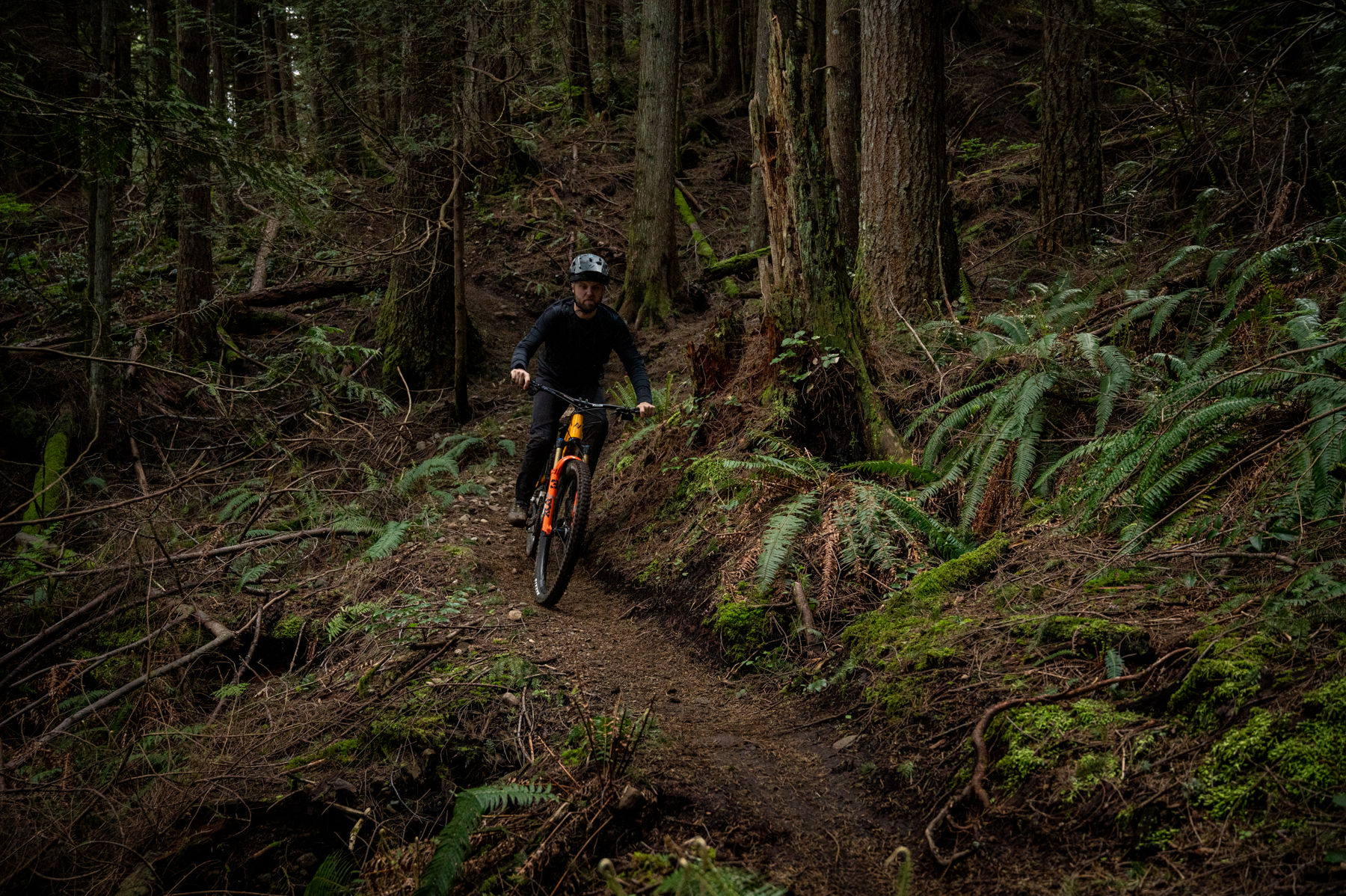
The times that the S4 Sight felt a little borderline big for me were mostly when climbing on more varied, undulating terrain. The S4 Sight’s seated cockpit is just a smidge longer than would be strictly ideal for me; that more stretched-out position put a bit of tension in my lower back and would start to get fatiguing by hour four or five during longer rides with a lot of rolling climbs where I was moving through a lot of different seated body positions as the trail pitch varied. Moving the seat fairly far forward on the rails helped, but a slightly shorter effective top tube length would give me more wiggle room to work with.
Once I stood up and started descending, though, I stopped having any questions about the Sight’s sizing — the S4 felt great. I’ve recently mentioned a few times that, particularly for more descending-focused bikes, I’ve been gravitating toward slightly longer reaches and taller stacks, and then going to narrower bars to reign the sizing back in a touch; the S4 Sight is a good example of that approach working well for me. It wasn’t that long ago that I was defaulting to an 800 mm bar on many bikes, but I wound up at 780 mm on the Sight, which is more typical these days on longer bikes.
(For what it’s worth, Norco’s Ride Aligned setup guide recommends a 780 mm wide / 25 mm rise bar with 15 mm of stem spacers for me; I wanted the bars a little higher and ran 25 mm of spacers with the Sight set up as a 29er, and dropped down to 22.5 mm in Mullet mode — more on that difference in a minute.)
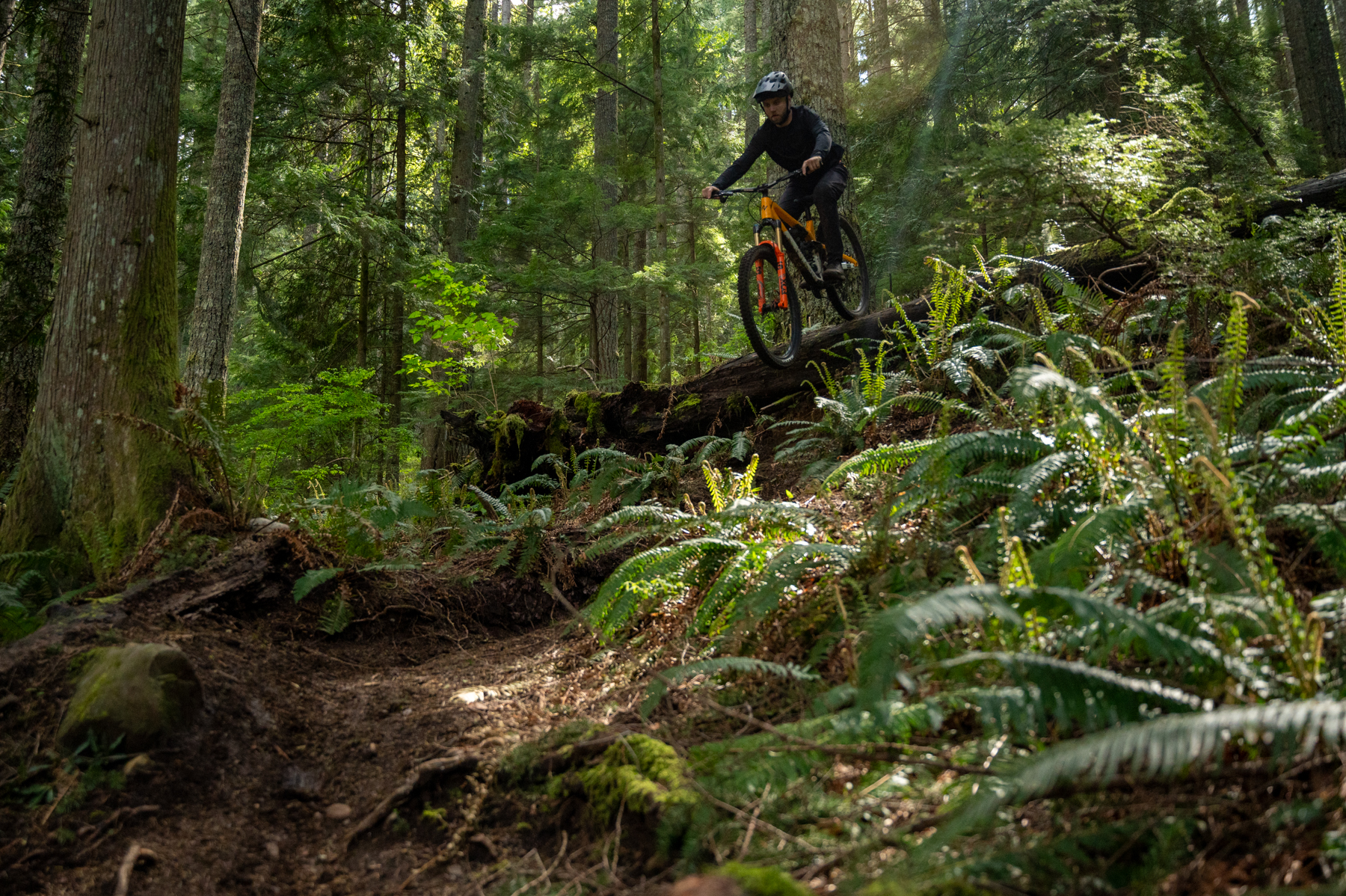
That’s a (very) longwinded way of saying that (1) I think that Norco’s recommendation of the S4 Sight was the right one for me, but (2) if I had to deviate from the S4, going down to the S3 would be a complete no-brainer over sizing up to the S5, and that (3) I think that my strictly ideal sizing would be about a hypothetical S3.7. Norco has done a good job of making the Sight easy to size up on reach-wise — it’s got a very short seat tube with good post insertion — but it’s still a bike that I think far more folks will want to size down on (rather than size up), relative to Norco’s recommended sizing.
Climbing
I really like the way the Sight climbs, but as is often the case with longer-travel Trail bikes, how you feel about it is probably going to depend on the sorts of bikes that you’re used to and what your expectations are.
If you’re after a bike in this travel range that feels really snappy and eager not just to climb, but do so quickly, there are better options than the Sight — but those sorts of bikes tend not to be able to do everything that the Sight does on the way down (more on that in a minute). On the other hand, if you’re more accustomed to bigger Enduro bikes and are looking at the Sight as a more efficient, versatile take on what’s still a fairly descent-focused bike, you’ve got the right idea.
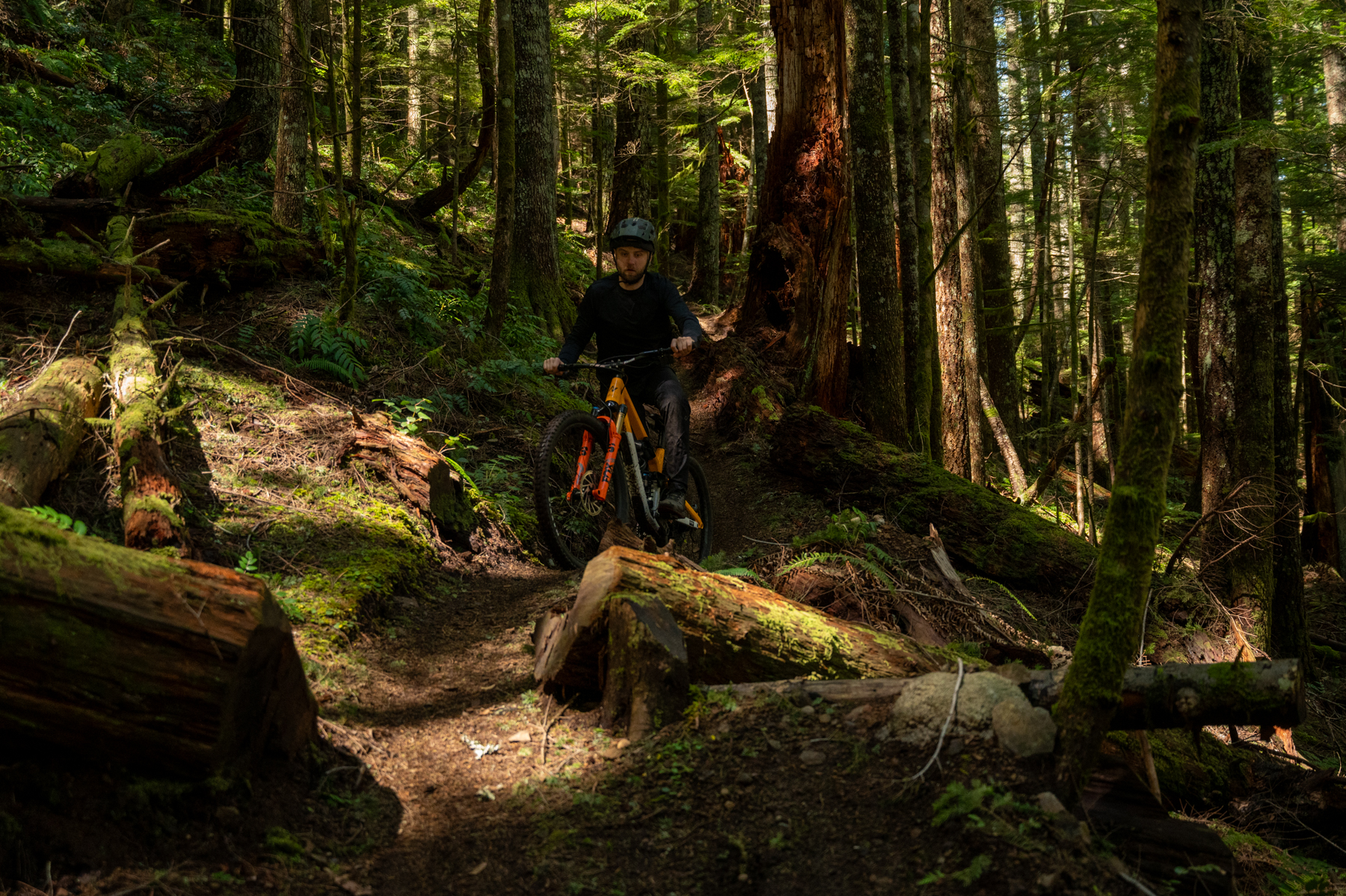
The Sight’s traction under power is excellent, and it pairs that with efficiency that’s well above average for a bike that comes even close to the Sight’s levels of grip and compliance when on the pedals. The Sight’s overall fit and demeanor feel more akin to a modern Enduro bike than a more XC-oriented sort of Trail bike (unsurprisingly so, given its geo and high-pivot layout). But the Sight is a notch more efficient and sprightly feeling than most 160+mm-travel Enduro sleds on the way up.
The Sight is also an especially good technical climber for what is, overall, a comparatively descending-focused bike. Its suspension performance certainly helps, but the Sight also feels just a bit more maneuverable / easy to manage at low speeds and in tight, ledgy bits of trail than I would have expected, given its overall stability, fairly long wheelbase, and so on. The fact that the Sight’s bottom bracket is a little on the higher side of average probably helps there — both from the standpoint of pedal clearance, but also in helping make the Sight feel more nimble and easier to manage at lower speeds than its high-speed handling would suggest.
As I mentioned in the Fit section above, I would love it if the S4 Sight’s effective top tube was just a tiny bit shorter. The seat tube is plenty steep, so I guess I’m realistically looking for a fractionally shorter reach to most ideally suit me, personally. Again, I still think that the S4 is the right size for me overall, but I definitely wouldn’t want it to be any bigger.
The Sight also isn’t immune to the tradeoffs inherent to a high-pivot layout when it comes to added noise and drag, but Norco has done a good job of minimizing them. The idler made a little more noise on the first couple of rides but quieted down substantially after things wore in just a touch, and it feels relatively low drag until the chain gets really dirty and poorly lubed. As per usual for high-pivot bikes, that degradation in drivetrain efficiency as the chain gets dry and gritty comes on a bit faster than it does on bikes with a more conventional drivetrain layout, but as high-pivot bikes go, the Sight does pretty well there.
Descending
Norco’s own description of the Sight focuses on its descending performance first and its versatility as an all-day-epic option second, and that’s an accurate way to look at the Sight. There’s a wide spectrum of ~150mm-travel bikes, from super lively, sharp-handling ones to bikes that feel more Enduro-derived but tightened up and made a bit more versatile. The Sight is closer to the latter end of the spectrum.
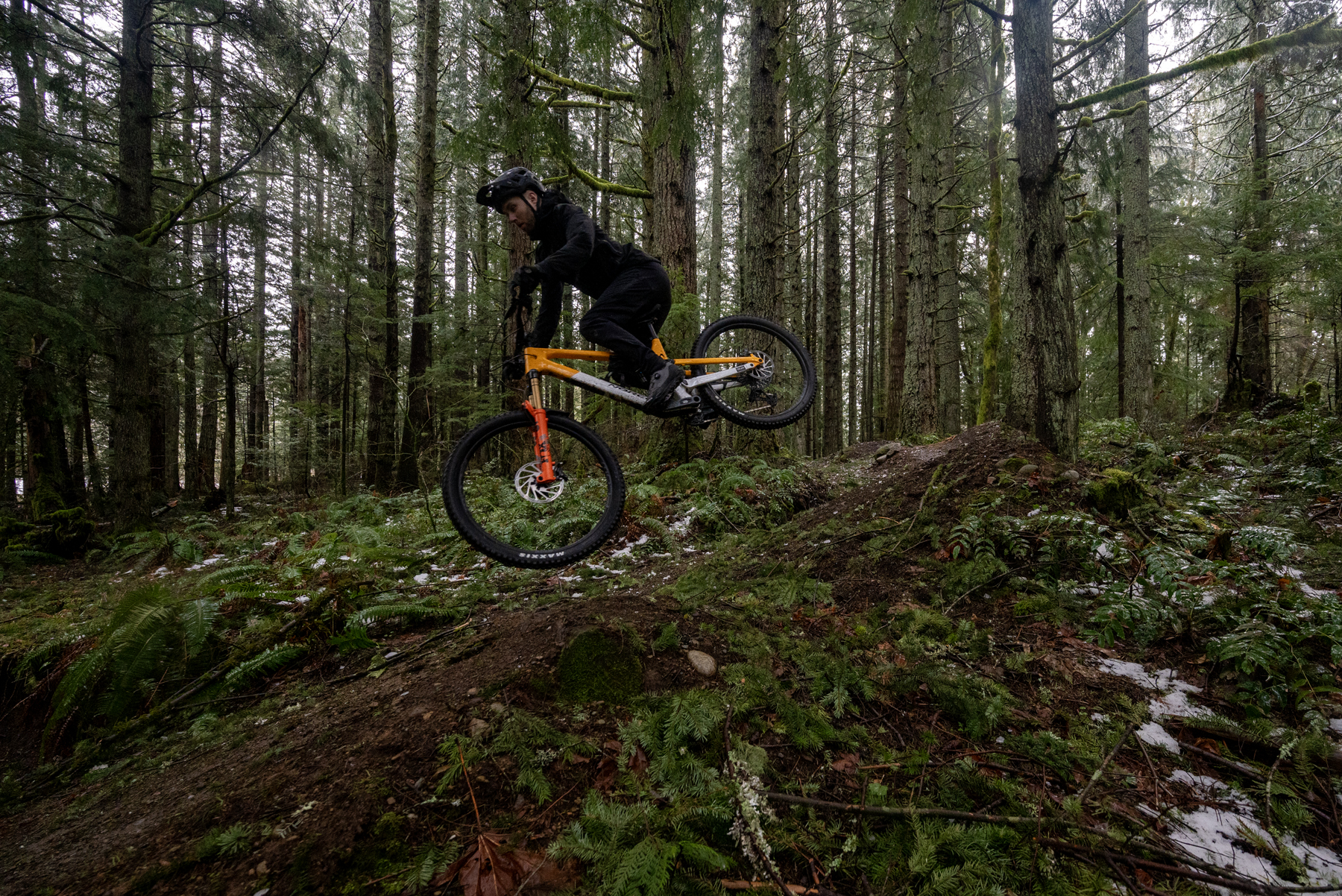
The Sight is one of the more stable ~150mm-travel bikes I’ve been on in recent memory; it’s quite comfortable and composed on steeper, faster descents. It’s much more reminiscent of an Enduro bike that’s been made more lively via reduced suspension travel and dialed-back geometry than it is a bulked-up Trail bike, both in terms of its handling and (especially) its suspension performance.
As 150mm-travel bikes go, the Sight is a notch more planted and composed in its suspension performance than average. Its small-bump sensitivity and grip off the top are excellent, but it ramps up smoothly and feels nicely composed and supportive through the middle part of the travel. Folks who are coming to the Sight from (most) shorter-travel Trail bikes might find it to be a surprisingly big step up in how planted and composed it feels in rougher, choppier terrain; the more you’re used to bigger Enduro or DH bikes, the more familiar the Sight is likely to feel.
Given everything I just said, the Sight still does an impressive job of being relatively lively and engaging on mellower, flatter trails and/or when you’re not pushing it as hard. If you’re primarily interested in riding flowier, less-demanding trails, there are any number of bikes (including Norco’s own Optic — Full Review coming very soon) that are better suited to that duty.
That said, the Sight is surprisingly nimble and lively when you dial things back a bit, relative to bikes that are as capable as the Sight is in the sort of terrain (where a full-on Enduro bike would typically be called for). The Sight’s suspension performance is a notch on the more composed and planted end of the spectrum, but it doesn’t go so far in that direction as to feel dead and unenergetic when you’re not just plowing through a rock garden at speed. It jumps well, does a reasonable job of building speed by pumping through terrain features, and so on. The Sight isn’t a one-dimensional sledgehammer of a bike by any stretch.
The Sight also does a commendable job of being able to be pushed quite hard, without demanding that you do it all the time. Many bigger Enduro bikes that feel relatively sharp-handling and engaging at lower speeds accomplish that (at least in part) by being super precise and facilitating aggressive riding through exacting line choice and a very dynamic, active riding approach. But those sorts of bikes also tend to feel high-strung and harder to manage if you aren’t pushing them pretty hard and/or somewhat unforgiving of mistakes; that’s not the case with the Sight.
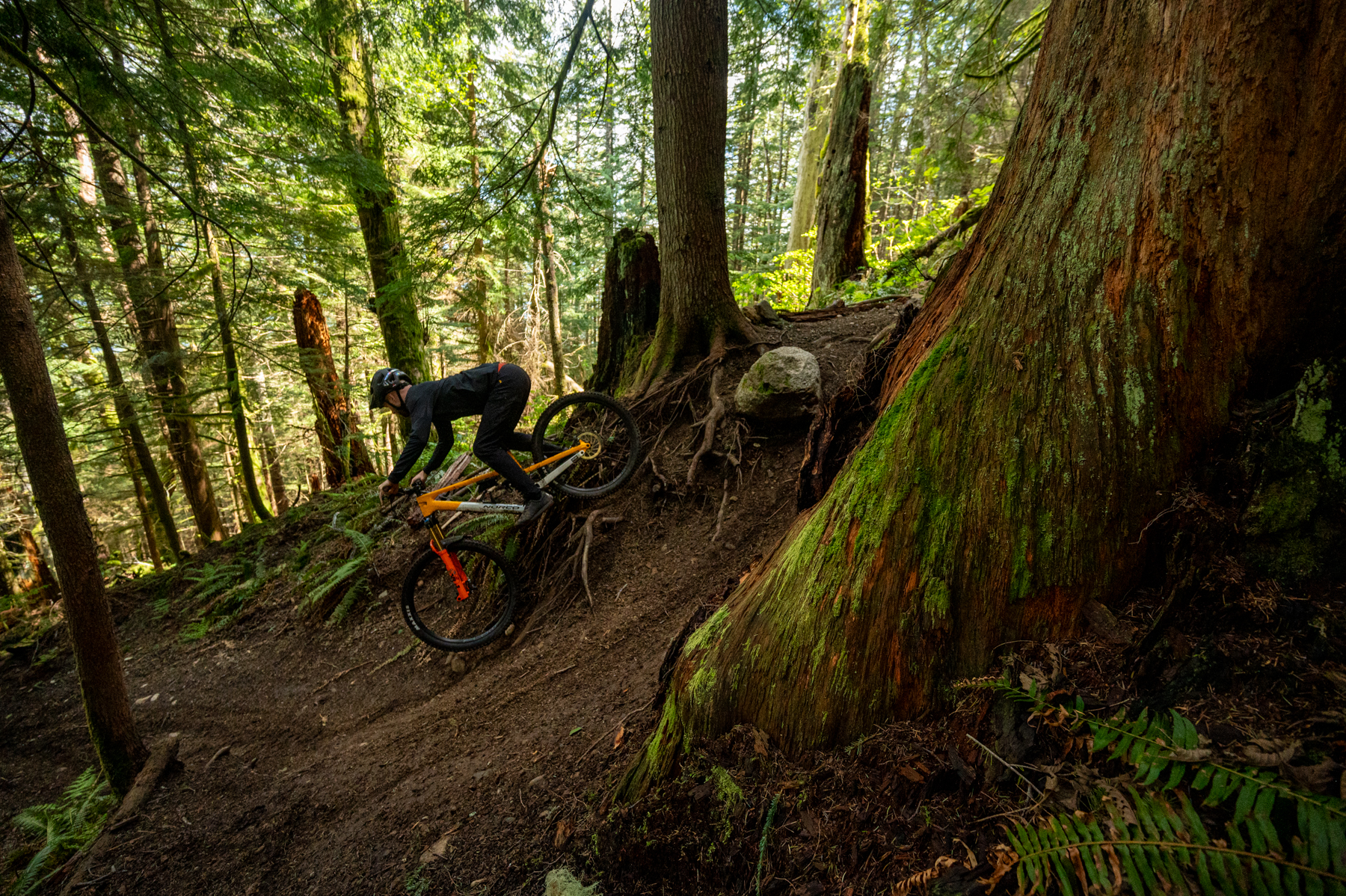
So as a do-it-all quiver of one, the Sight is a compelling option for folks who are generally fairly gravity-focused, but want something just a bit more versatile and fun beyond super steep, gnarly trails, relative to most modern Enduro bikes. The Sight is more manageable than those sorts of really long, stable sleds in lower-speed technical scenarios, more lively and engaging on mellower, flowier, trails, and while there are better options if you want a bike for going flat out on steep, rough stuff all the time, the Sight does quite well there, too.
Norco has also done a nice job of making the Sight feel coherent as both a 29er and with a mixed-wheel setup. As per usual, a 29’’ rear wheel makes the Sight a little more stable, a little less nimble / playful, and shifts its preferred weight bias rearward a touch. (That last point is likely due more to the fact that the chainstays get longer in the 29er setting than the wheel size itself). The MX setup quickens the Sight’s handling a touch and tends to require a little more steering input through the bars to compensate for the quicker turn-in of the smaller rear wheel. I did find myself preferring to run the bars a smidge lower in the MX configuration than the 29er one to compensate for the differences in preferred body positioning, but that was just a matter of moving a headset spacer.
None of those changes are massive, and they’re all quite typical of bikes that can toggle between rear wheel sizes. The Sight’s character is mostly similar in either configuration, with the rear wheel size change feeling like a modest tweak rather than a massive sea change in how the Sight rides.
The Build
Norco’s attention to detail on both the build spec and many of the frame details on the Sight is excellent. I love that the coil-equipped builds come with a Sprindex adjustable-rate coil spring to make initial setup easier, and so that more folks will be able to get to a good place with the stock spring, rather than needing to buy a replacement. The fork steerer tube comes much longer with a whole lot more spacers than most complete bikes, to leave more room to tinker with cockpit setup. A lot of folks will probably want to trim it shorter once they get things dialed in, but that’s way better than wishing you had more length to work with out of the box — something that I’ve run into on a few bikes recently. And 29er builds come with a 30-tooth chainring, while MX ones get a 32-tooth ring to compensate for the difference in gearing you get by changing the rear wheel size — something I can’t think of any other brand doing.
I did swap out a few parts to help myself get more comfortable on the Sight, but I’d chalk all of the tweaks up to personal preference rather than poor choices on Norco’s part. I wanted less backsweep than the stock Deity bar offered (something I run into all the time on review bikes), and while I like the smaller-diameter version of DMR’s Deathgrips, the standard-size ones that came stock are bigger than I’d like. Easy, minor stuff all around.
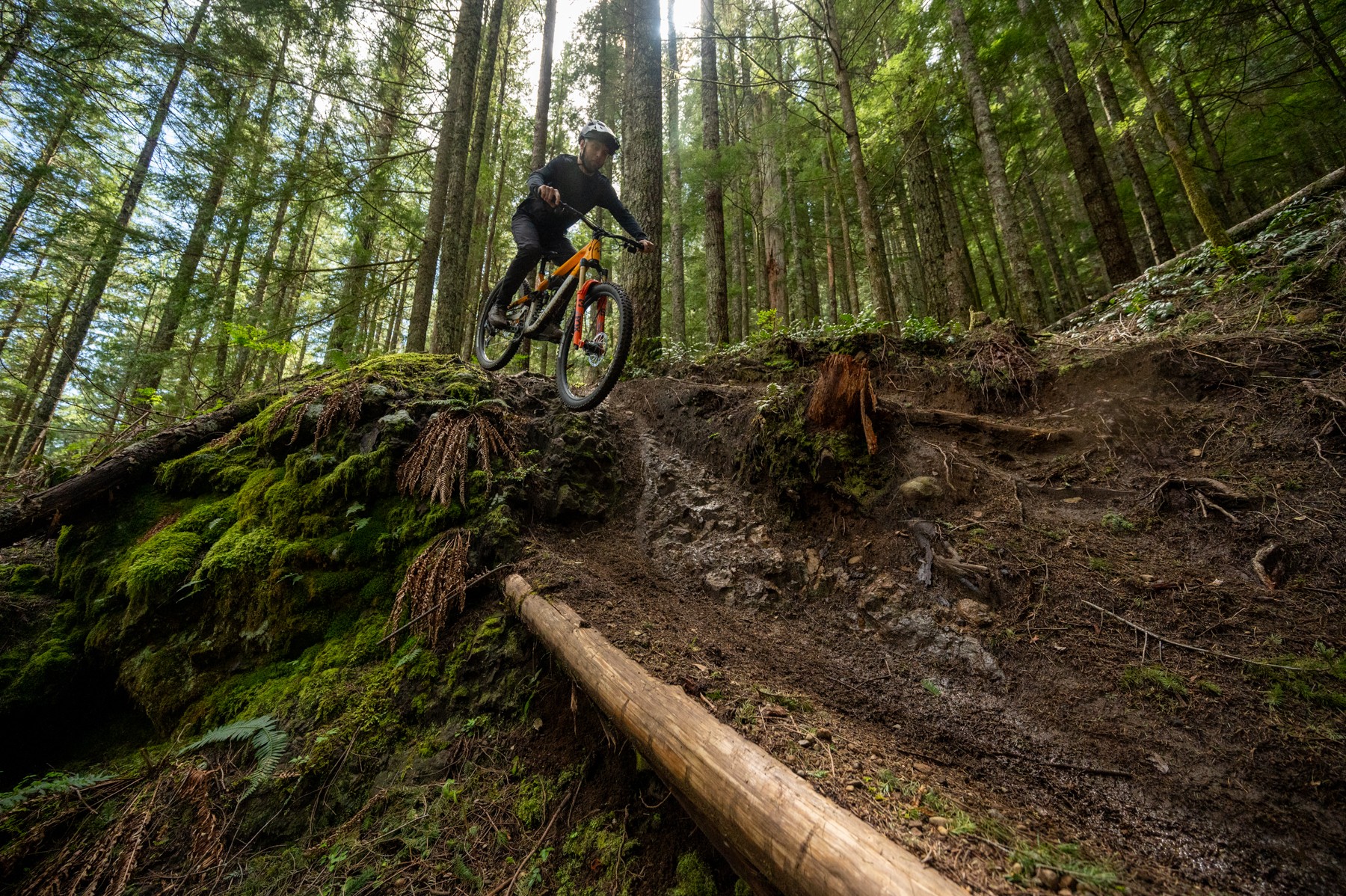
I’ve also often complained about big Enduro bikes coming with inappropriately wimpy tires — and stand by my take that Enduro bikes with 160+ mm of travel merit casing at least in the Double Down class. The Sight is versatile enough that I’m not going to argue that the stock Maxxis Minion DHF / DHR II Exo+ MaxxTerra rubber is a bad choice, but I personally wanted a stickier front tire and beefier casings, particularly in the wetter winter months here in the PNW, and went through a few different options to that end as well.
Outside components, a lot of the frame details are similarly well thought out. The cable routing is tidy, and the frame protection is well-sorted. It’s not visually obvious which way the bolt-on lower shock mount is meant to attach, but it uses two different diameter bolts so that it physically can’t go on backward. Trunnion-mount frames tend to require a spacer between the mounting bosses on the shock itself and the bearings in the rocker link, which can be annoying to keep aligned during shock installation. The Sight uses tophat-shaped spacers that slide into the inner race of the bearings so that they stay put much better. Good stuff all around.
Who’s It For?
The Sight is a really interesting option for folks who want a fairly descending-oriented bike that’s quite composed and confidence-inspiring on steeper, rougher trails, but manages to be a bit more versatile and engaging than most modern Enduro bikes the rest of the time.
It’s still going to appeal most to folks who want to ride aggressively on technical trails most of the time, but the Sight does an impressive job of being able to be pushed quite hard without requiring that you do so all the time. If you’re after a bike that has a lot of the high-speed, burly-trail capability of a modern Enduro bike in a slightly more easygoing package, there’s a lot to like here.
Bottom Line
High-pivot bikes have become increasingly common in the Enduro and DH realms, but there still aren’t that many high-pivot Trail (or All-Mountain, as Norco refers to the Sight) ones out there.
So the Sight has carved out an interesting space for itself — it’s one of the more descending-oriented ~150mm-travel bikes out there, but accomplishes that while being just a bit more lively and engaging at lower speeds and on mellower trails than its performance on steeper, rougher trails might suggest. For the right folks, that’s a compelling recipe for a do-it-all quiver of one. Stay tuned for our review of its little sibling, the Optic, coming very soon.
Deep Dive Comparisons
BLISTER+ members and those who purchase our Digital Access Pass can check out our Deep Dive comparisons linked below. Get our Digital Access Pass to view all our Deep Dives and Flash Reviews, or become a BLISTER+ member today to get access to that and a LOT more, including the best worldwide Outdoor Injury Insurance, exclusive deals and discounts on skis, personalized gear recommendations from us, and much more.

Deep Dive: 2024 Norco Sight
We compare the Norco Sight to the Trek Slash, Kavenz VHP 16, Norco Range, Norco Optic, We Are One Arrival 152, Santa Cruz Bronson, Propain Tyee, Pivot Firebird, Deviate Highlander II, Orbea Rallon, Ibis HD6, and REEB Steezl.
Blister’s Flash Reviews and Deep Dives are accessible to those who purchase one of our paid subscriptions
To get our comprehensive Deep Dives and our initial, unfiltered reports on new gear, become a member and receive many other services, deals, and discounts.
If you’re already an active member, please log in.
(If you’re already logged in and a member in good standing and seeing this message in error, please refresh this page in your browser.)

Reads like a good bike David. Thanks for the comprehensive review.
I see the chainstays are a far bit shorter than your own Geometron, even in full 29 mode – so that must make it a bit less intuitive to weight the front wheel? I was looking forward to your thoughts on that but didn’t spot it in the review.
I’m really looking forward to you guys putting more valuable bike stuff into the members only category. I’m not a snow guy and currently membership seems not quite worth the cost (for bike only folk).
Hello well agree with everything he said. I don’t have a 2024 I have a 2023 coming from my Ransom to the Sight – what a differenc. The Sight actually feels more like an Enduro bike than the Ransom does. The Ransom is really lively and climbs okay; the Sight makes you confident even if it is not the high hit it.